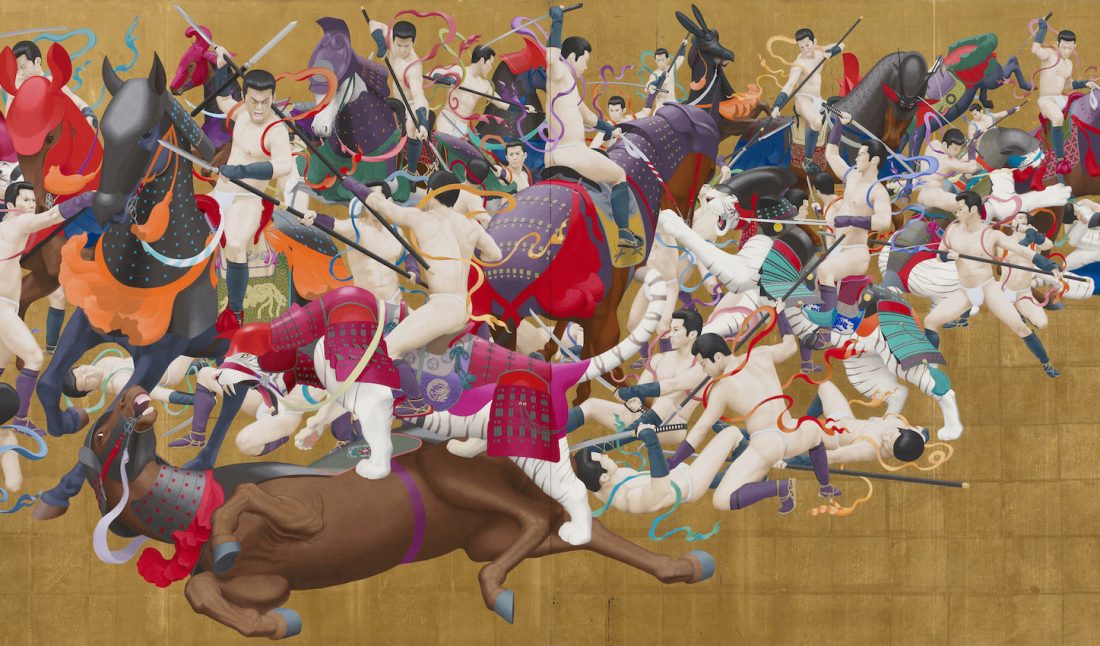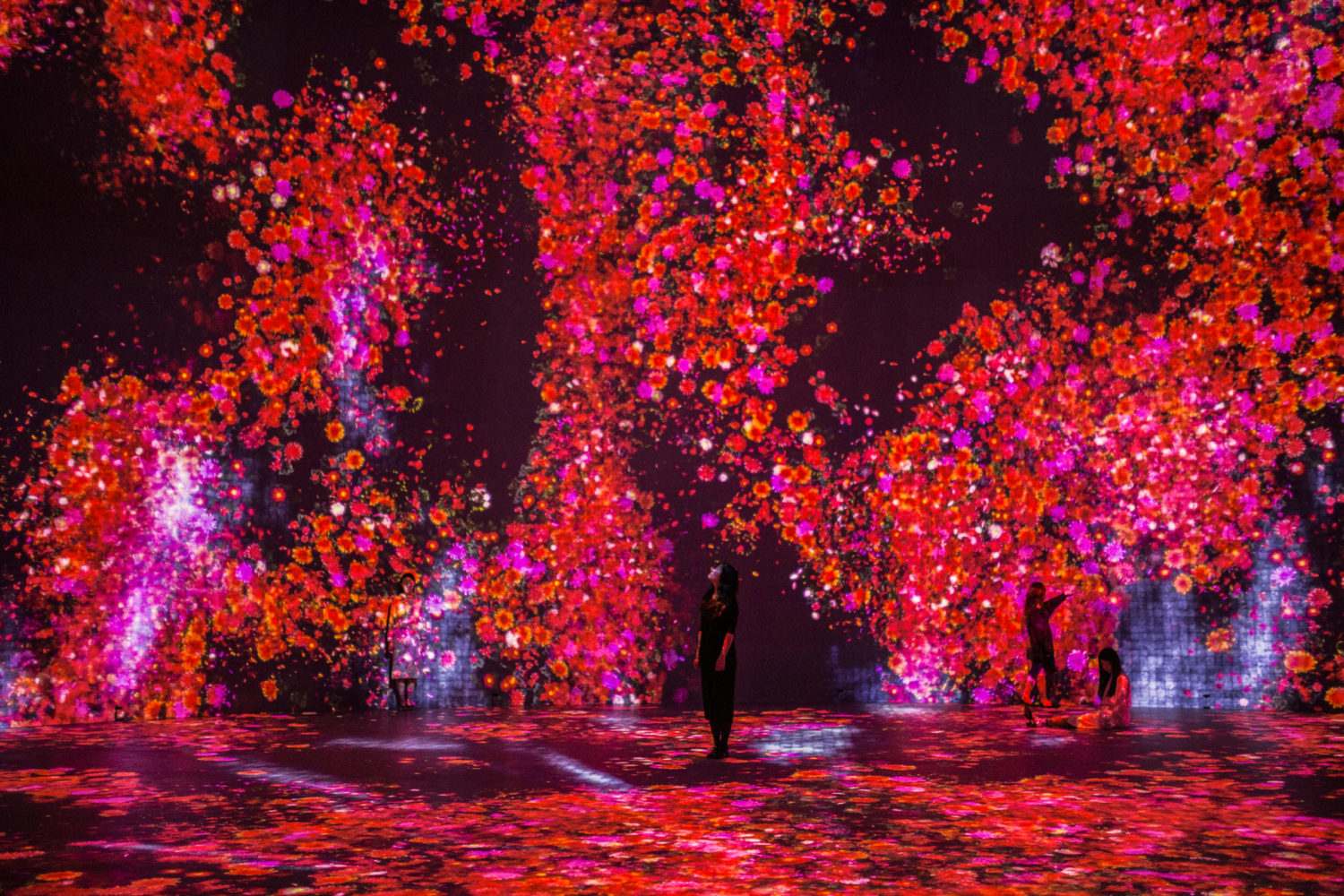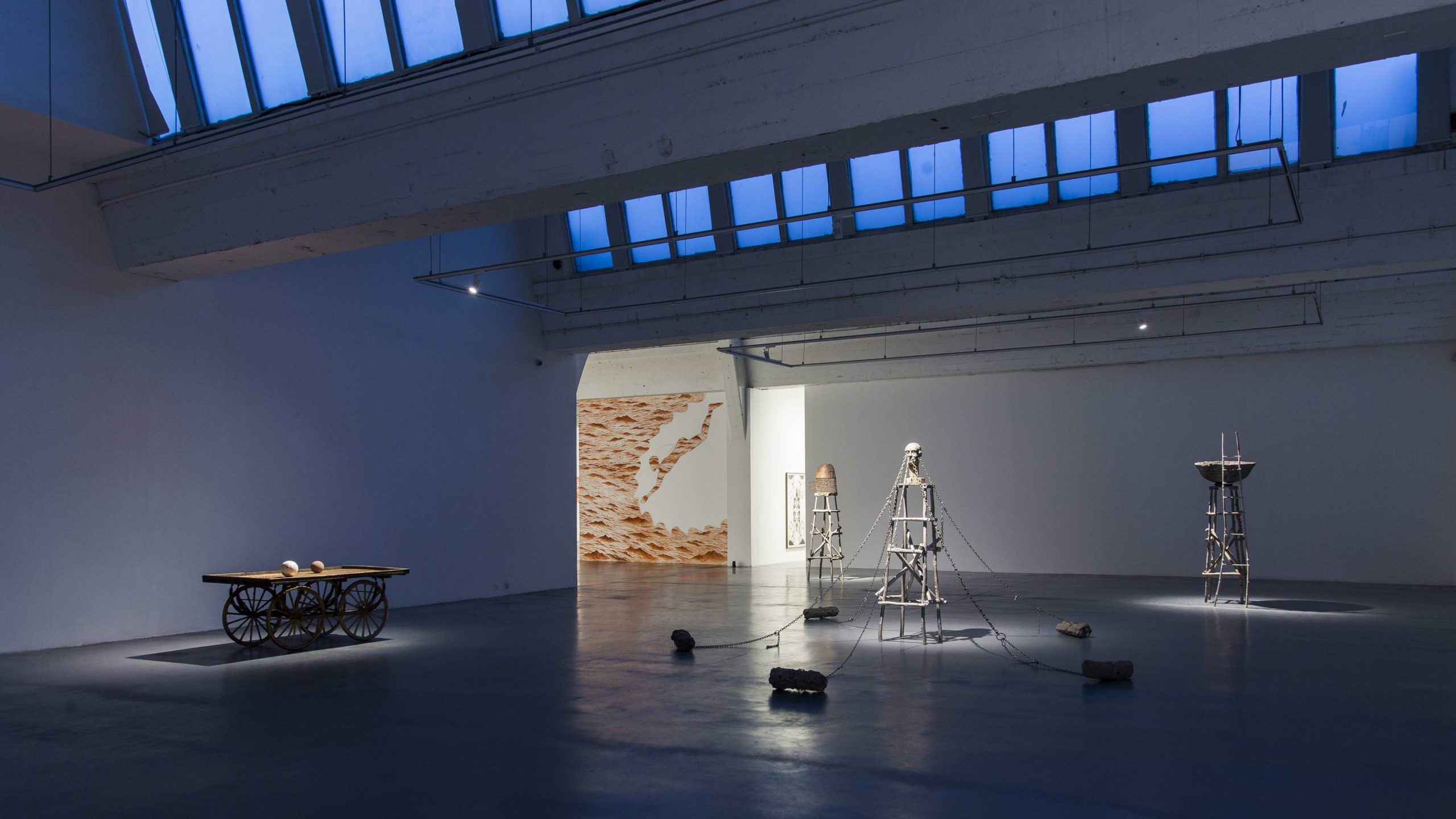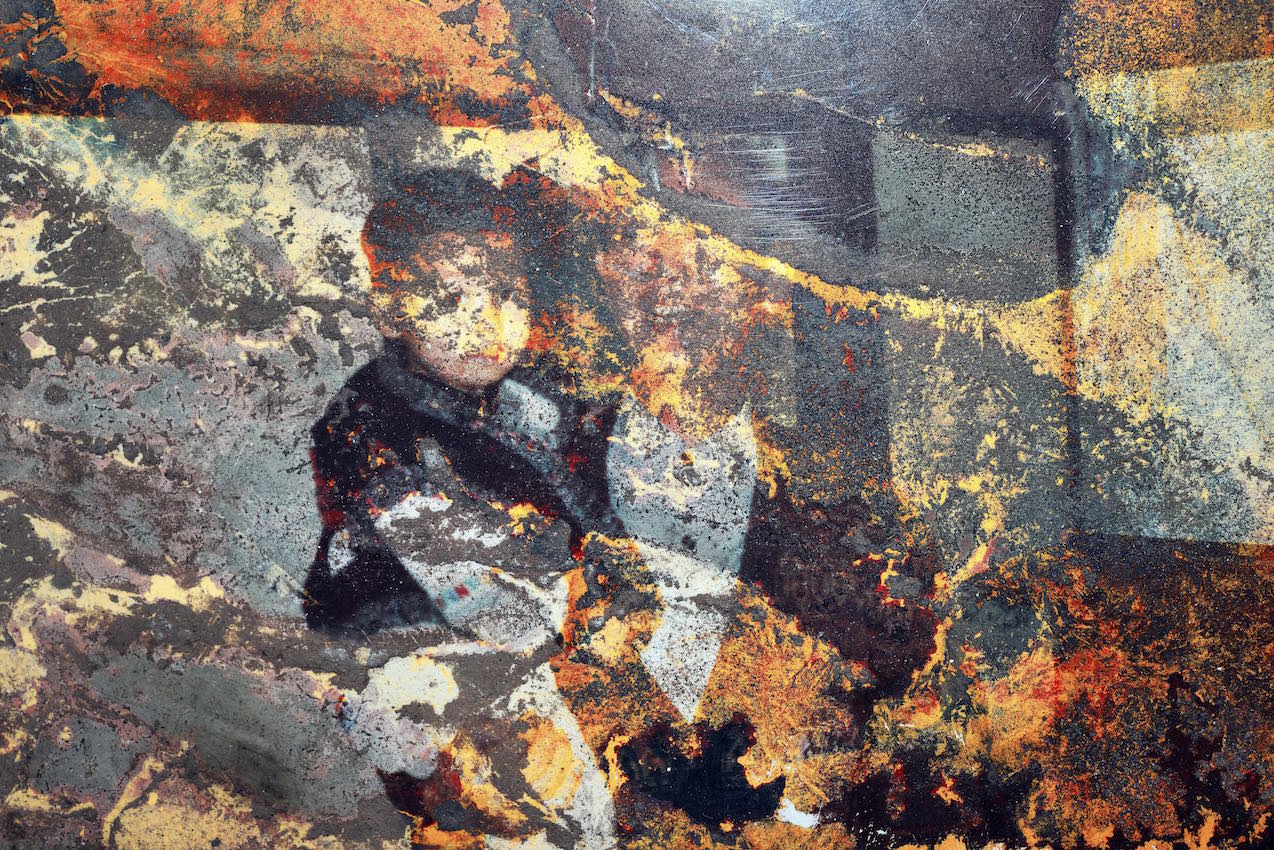“Garden of Unearthly Delights: Works by Ikeda, Tenmyouya & teamLab” is currently on view at the Japan Society and features works by contemporary Japanese artists that pay homage to the long traditions of classic Japanese art. The artworks depict dramatic visual moments that look towards masters such as Ito Jakuchu and Katsushika Hokusai for inspiration. For this exhibition, Manabu Ikeda, Hisashi Tenyouya, and the art and technology collective teamLab artistically render modern cultural and social issues in a technically precise manner in the tradition of master craftsmen, takumi. The detail incorporated into each work of art calls for the viewer’s full attention and occasionally, physical interaction.
Independent curator Laura J. Mueller and Director of the Japan Society Miwako Tezuka, along with the artists, walked us through the exhibition to explain some of the technical and creative concepts behind the work.
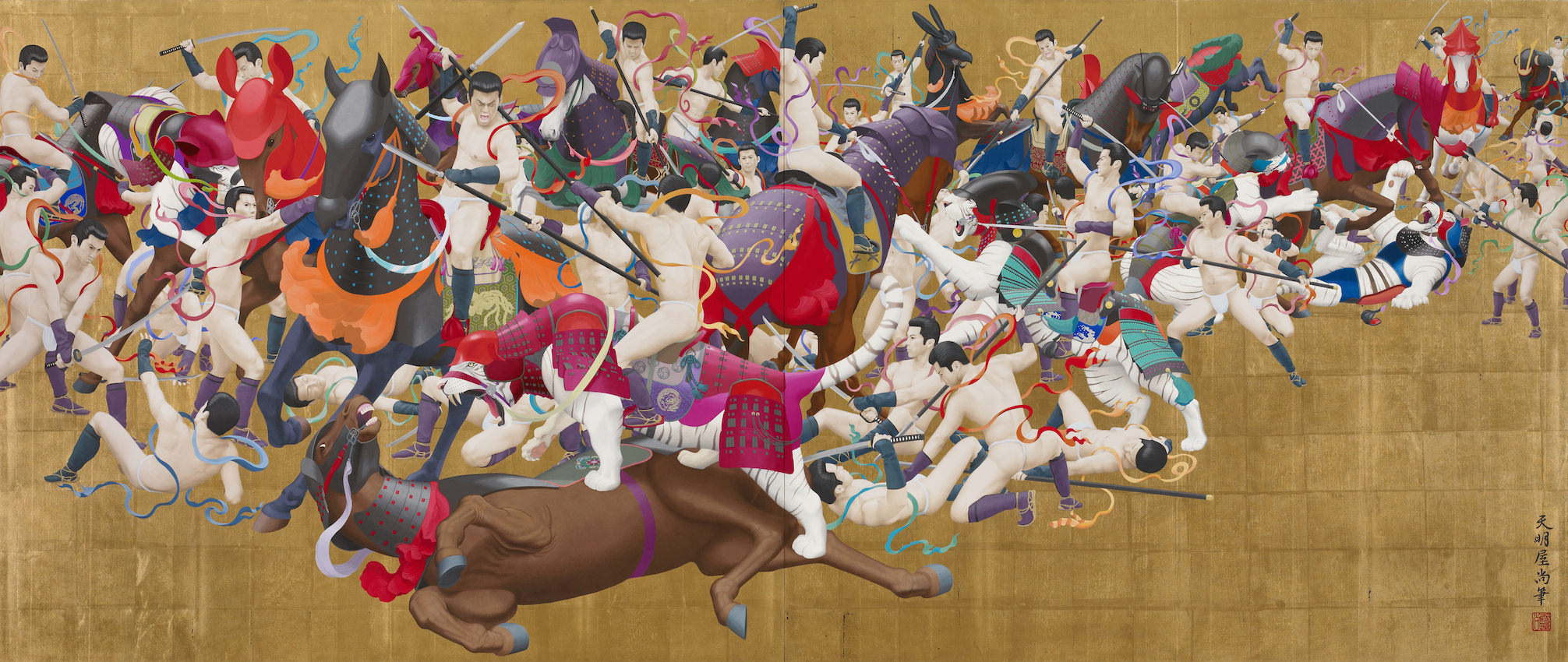 Rhyme, 2012.
Rhyme, 2012.
Ikeda Explores Man’s Complex Relationship to Nature
We began with Ikeda’s Meltdown (2013), which encapsulates Ikeda’s reoccurring theme of man’s relationship with nature, and were given magnifying glasses in order to perceive each minute detail. The work combines imagery of the aftereffects of the 2011 tsunami and Fukushima meltdown with elements of the Rocky Mountains, which inspired him during his residency in Vancouver. Ikeda includes small white figural silhouettes in Meltdown as with the majority of his paintings. Mueller explained that non-descript figures are often included in traditional East Asian landscape art as a way for the viewer to enter into the work.
The exhibition includes Ikeda’s largest work to date, Foretoken (2008). The towering tsunami depicted in this work uproots skyscrapers, trees, trains, cars, and people, while also forming an autobiographical narrative of sorts. Mueller said, “Foretoken highlights Ikeda’s process. When he starts a painting, he starts with a small idea. It grows organically. This piece was originally three panels, but as it grew, he realized he wanted to give it more space, so he then added on a fourth panel. In doing that, it focuses on one of the concepts of traditional Japanese art, the use of Ma, or empty space in order to bring balance to the composition. His works are very autobiographical. He takes in elements of where he is or components of his life. If you look closely at Meltdown, there are little things about Vancouver in that painting. He has included the birth of his daughter and his marriage, all of these events that occur while he is working on a piece.”
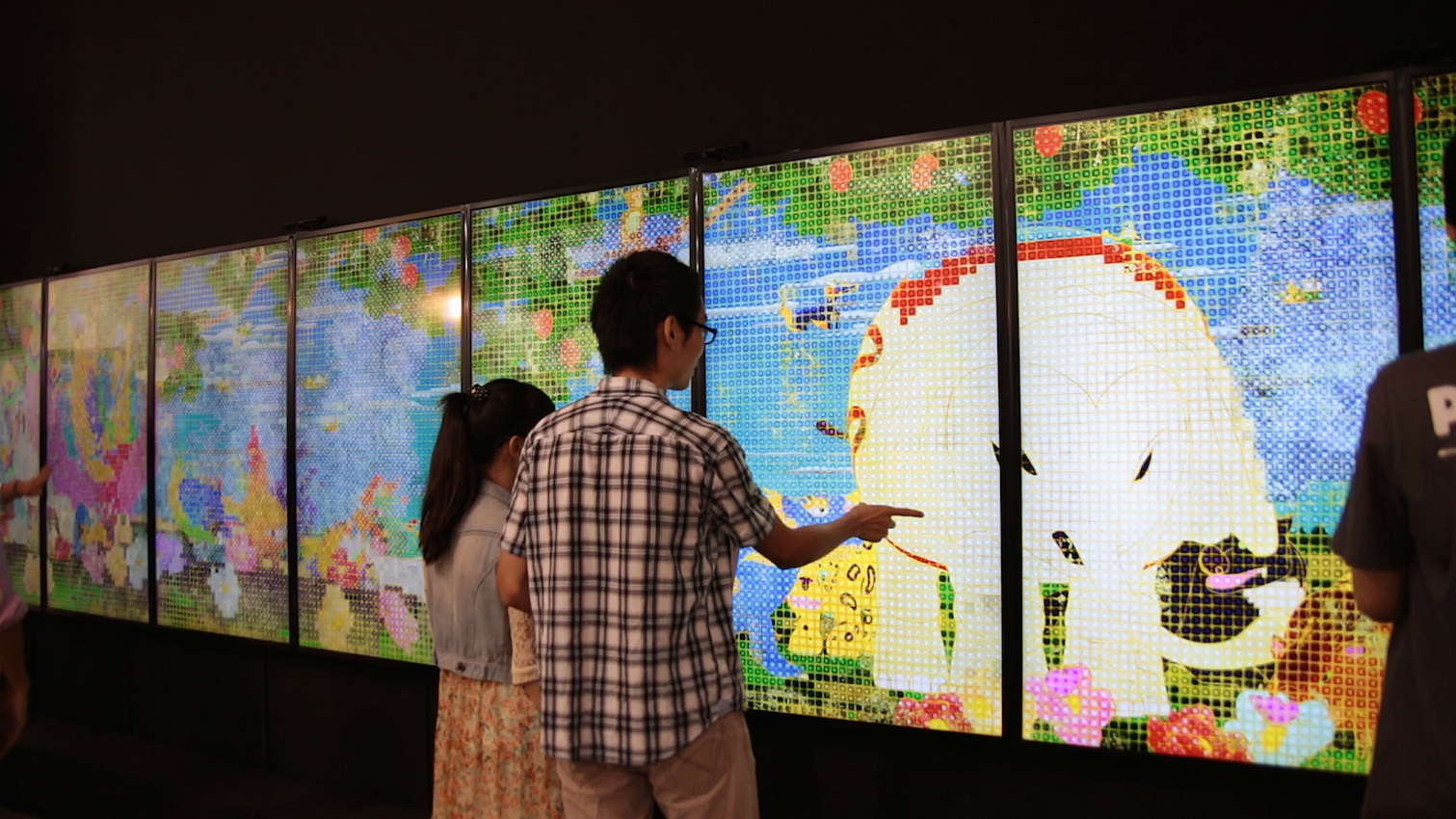 Acrylic paint, gold leaf on wood; inkjet print on paper, mounted on wood
Acrylic paint, gold leaf on wood; inkjet print on paper, mounted on wood The artist explained that the tsunami depicts the rise and fall of human civilization and technological invention. It’s not just the destruction of nature that people associate this painting with, but it’s also a depiction of the resurgence of energy and civilization building up again.
Cutting-Edge teamLab Focuses on the Cycles of Life and Movement
Next we looked at teamLab, a Tokyo-based collaborative that includes 300 individuals in the fields of art, design, computer engineering, and mathematics. Looking to traditional Japanese art for inspiration such as works created by Ito Jakuchu, teamLab’s works largely focus on the cycles of life and movement. Despite their traditional sources of inspiration, Mueller explained that the artist collective is on the cutting edge and seeks to break away from the materiality of art and the confines of a canvas. Due to the constant developments in technology, teamLab’s goal is to create digital works of art that are adaptable for future technological innovations.
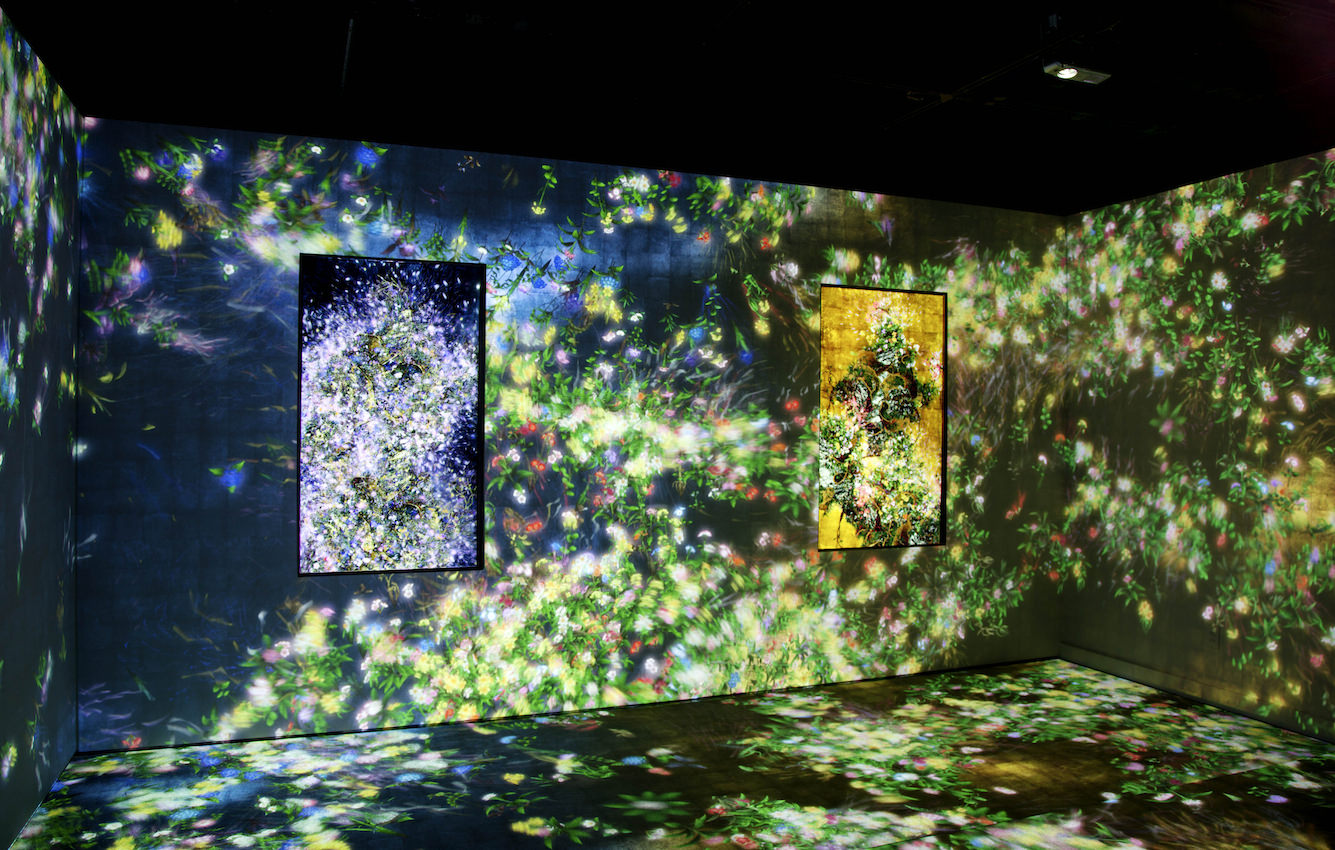 each 49 7/8 x 118 1/8 inches
each 49 7/8 x 118 1/8 inches
In addition to their interactive piece United, Fragmented, Repeated, and Impermanent World (2013), which mirrors the shapes and movements of viewers, teamLab is debuting a never-before-seen interactive, digital media projection. Blooming flowers are projected on the walls and floor of a single room, and blossom and shed their petals in accordance with the audience’s movements and interactions. For this project, titled Flowers and People—Gold and Dark (2014), Tezuka explained, “No projection is ever the same as a previous one. It’s exactly how nature works; you see season come again and again, but no flower is the same as last year’s. The computer program is constantly generating new arrangements.”
Self-Trained Tenmyouya Updates Traditional Japanese Art
The final artist in the show is Tenmyouya, a self-trained artist who practices various techniques of the Japanese-style painting Nihonga, which primarily utilizes paper and mineral pigments. As with the other artists, Tenmyouya updates traditional Japanese art practices by incorporating contemporary motifs and elements of street culture to create a new style of art that he calls “Neo Nihonga.”
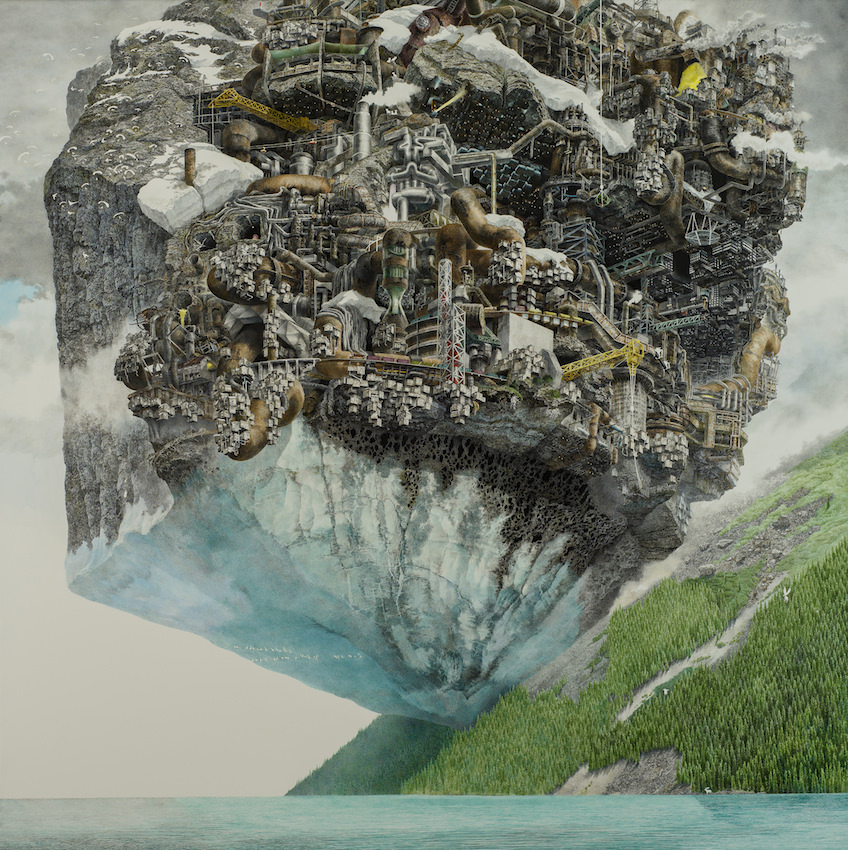 Hisashi Tenmyouya
Hisashi Tenmyouya For “Garden of Unearthly Delights” Tenmyouya included two mirroring paintings—one painted and one copied using an inkjet print—depicting a battle scene. For Rhyme (2012), Tenmyouya uses bold colors against a gold gilded background to form the warriors, animals, and other elements of the painting. He combined the traditional Japanese screen painting style of gilded backgrounds with the style of battle scenes created by Western Renaissance artists such as Leonardo da Vinci, Michelangelo, and Paolo Uccello to create a new style of combat painting. Instead of visually depicting the violence of warfare, the painting evokes rhythmic, choreographed movements of the warrior. The mirrored actions across the two panels suggest a cyclical narrative, while the Eastern and Western elements in the painting evoke contemplation on contemporary world affairs.
Shown in conjunction with Rhyme is a large Zen dry garden that replaces the traditional white sand and organic stones with red sand and black volcanic rocks with skulls. The absent violence of war in Rhyme, is instead found into the rock garden. Sand the color of blood and the skulls protruding from the stones transform the typically serene Japanese rock garden into a commentary of the consequences of war. The surreal garden spans the length of the room and begs viewers to consider themes of life, death, and war.
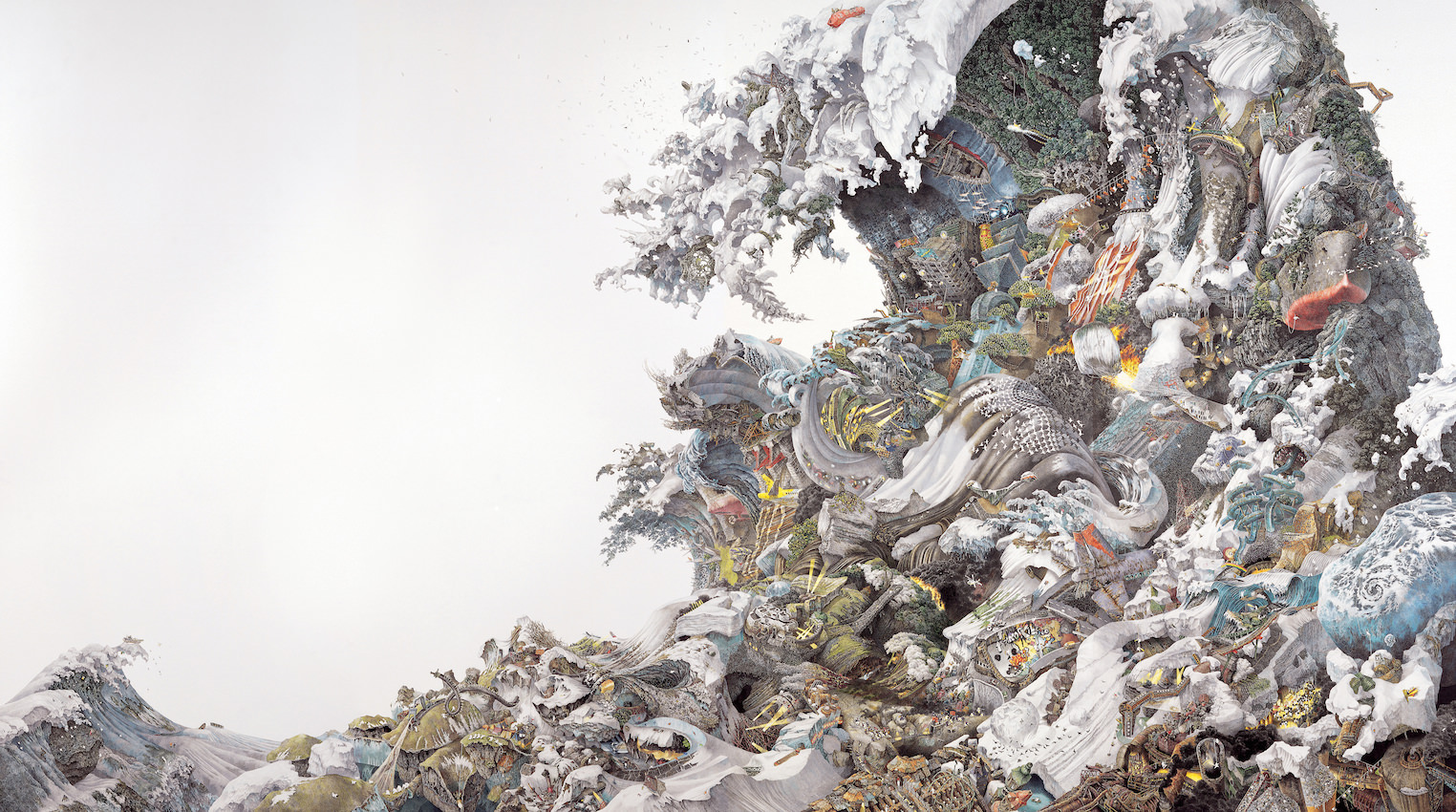 Rhyme, 2012
Rhyme, 2012
“Garden of Unearthly Delights” is on view at the Japan Society Gallery through January 11, 2015.






